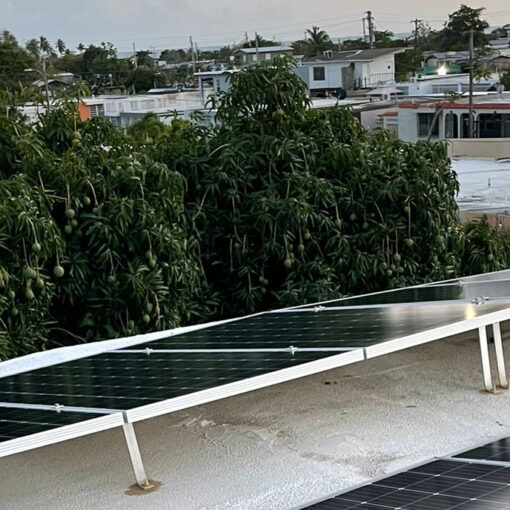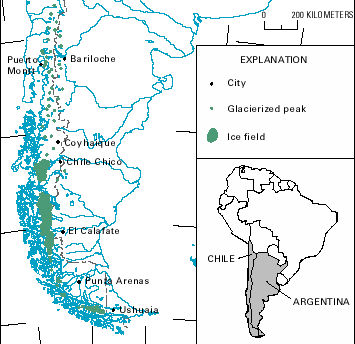The Advisory Opinion handed down by the International Tribunal for the Law of the Sea (ITLOS) on 21 May 2024 is truly remarkable. Its clarification that all anthropogenic greenhouse gas (GHGs) emissions, from any source, constitute marine pollution has potentially far-reaching consequences. Under the United Nations Convention of the Law of the Sea (UNCLOS), States must now take all necessary measures to prevent, reduce and control GHG emissions. In addition, States have the obligation to protect and preserve the marine environment against the impact of climate change, maintaining and restoring ecosystem health and the natural balance of the marine environment. Thus, ITLOS clarified UNCLOS as a legal basis for obligations to address climate change and its adverse effects, alongside the United Nations climate treaties, i.e. the United Nations Framework Convention on Climate Change (UNFCCC) and the Paris Agreement.
UNCLOS and external rules: a difficult relationship?
An important aspect of the ITLOS advisory opinion is that it addresses, in several places, the relationship between UNCLOS and other relevant rules of international law (external rules) and deals with UNCLOS´ place in the international legal system. By applying external rules in interpreting UNCLOS, ITLOS aimed to enhance the harmonization and coordination between different international treaties as well as treaty and custom and to address – to some extent – the fragmentation of international law.
While ITLOS succeeded in noting the relevance of many other treaties and customary international norms, it fell short of a comprehensive and consistent approach to determining which other treaty norms would be relevant to the interpretation of UNCLOS and how. This is most pronounced in the references to the Paris Agreement. While in the context of climate change mitigation obligations ITLOS notes the need to take account of the temperature threshold in Art. 2.1(a) of the Paris Agreement and the corresponding timeline for emission pathways in Art. 4.1 of the Paris Agreement, it did not draw on any other normative parameters of the Agreement, such as “progression” or “highest possible ambition” in Art. 4.3 of the Paris Agreement. Nor did it explain why it chose those two elements of the Paris Agreement to focus on. Arguably, establishing coherence by “taking into account external rules” might require a more comprehensive approach to the “other treaty” and a diligent analysis of its norms when applying them in the course of giving meaning to the terms in UNCLOS.
UNCLOS´ “living nature”
In the Tribunal’s view, the coordination and harmonization between UNCLOS and external rules are important for ensuring that the Convention remains a living instrument, in addition to clarifying and informing the meaning of UNCLOS provisions. (para 130; see also Jacqueline Peel´s contribution to this symposium)
In this regard, ITLOS identified three ways in which the relationship of UNCLOS and external rules can be formed: (i) through rules of reference in UNCLOS that refer to external rules, (ii) by way of article 237 of UNCLOS, which reflects the need for consistency and mutual supportiveness between the applicable rules, and (iii) by reference to article 31.3(c) of the Vienna Convention on the Law of Treaties (VCLT), which requires that account be taken, together with the context, of any relevant rules of international law applicable in the relations between the parties.
The main external rules which ITLOS identified were those in the UNFCCC, the Kyoto Protocol, the Paris Agreement, MARPOL, the Chicago Convention, the Montreal Protocol, including the Kigali Amendment, and the Convention on Biological Diversity (CBD). ITLOS considered that, subject to article 293, the provisions of UNCLOS and external rules should be interpreted consistently. Consequently, ITLOS called for those rules to be taken into account when interpreting the provisions of UNCLOS. ITLOS stated clearly that those rules are not lex specialis to UNCLOS, exist independently, and do not override or frustrate UNCLOS. However, they play a role when giving meaning to the terms of the Convention.
Application of external rules in the interpretation of UNCLOS
The most central finding in the advisory opinion is that anthropogenic GHG emissions are “pollution” under article 194 of UNCLOS, both directly as “substances”, and indirectly – by causing global warming – as “energy” within the meaning of Art. 1.1(4) of UNCLOS. This applies to any source of pollution, whether land-based, vessel-based, and atmospheric.
With that finding, the “legal gates” were opened to identifying the content of legal obligations under article 194 of UNCLOS, which requires States to take all necessary measures to prevent, reduce and control pollution. ITLOS identified two factors that are especially relevant to the objective assessment of “all necessary measures”: (1) science and (2) relevant international rules and standards (para 207).
ITLOS refers to the Intergovernmental Panel on Climate Change’s 2018 1.5oC Warming Report which stated that
“[l]imiting warming to 1.5°C implies reaching net zero CO2 emissions globally around 2050 and concurrent deep reductions in emissions of non-CO2 forcers, particularly methane (high confidence)” (2018 Report, p. 95) and that the IPCC states in the 2023 AR6 Synthesis Report that “[d]eep, rapid, and sustained GHG emissions reductions, reaching net zero CO2 emissions and including strong emissions reductions of other GHGs, in particular CH4, are necessary to limit warming to 1.5°C … or less than 2°C … by the end of century (high confidence). (2023 Synthesis Report, p. 68)” (para 210).
The role of the Paris Agreement: a missed opportunity by ITLOS
Another factor or reference point for determining “necessary measures” are the international rules and standards found in “the UNFCCC and the Paris Agreement, as the primary legal instruments addressing the global problem of climate change” (para 214). In this regard – and to satisfy the need for harmonization and consistency in international law – ITLOS considered the global temperature goal and the timeline for emission pathways set forth in the Paris Agreement (para 215) and found those two elements particularly relevant in informing the content of necessary measures to be taken under article 194, paragraph 1, of UNCLOS (paras 201 and 222).
It is worth noting that ITLOS (with reference to Decisions 1/CMA.4 and 1/CMA.5 which “[r]eiterate[s] that the impacts of climate change will be much lower at the temperature increase of 1.5°C compared with 2°C and resolves to pursue further efforts to limit the temperature increase to 1.5 °C) focused exclusively on the 1.5oC temperature threshold (and not “well below 2oC”) in Art. 2.1(a) of the Paris Agreement and the timeline for emission pathways corresponding to that goal, as established in Art. 4.1 of the Paris Agreement (para 216). ITLOS noted in this regard that “Article 4.1 of the Paris Agreement is consistent with the objective of the obligation under article 194, paragraph 1, of the Convention” (para 200).
It is unclear, however, why ITLOS limited itself to only considering those two (i.e. (i) temperature threshold and (ii) timeline for emission pathways) and no other “rules and standards” in the Paris Agreement as reference points. Despite noting that
“Article 4, paragraph 2, of the Paris Agreement requires each Party to “prepare, communicate and maintain successive nationally determined contributions that it intends to achieve.” Parties then “shall pursue domestic mitigation measures, with the aim of achieving the objectives of such contributions.” In addition, each Party’s successive nationally determined contribution “will represent a progression beyond the Party’s then current nationally determined contribution and reflect its highest possible ambition, reflecting its common but differentiated responsibilities and respective capabilities, in the light of different national circumstances.” (para 218)
the Tribunal did not engage with these other elements in the exercise of “giving meaning to the terms of the Convention”.
Arguably, the content and meaning of “all necessary measures” could have been further clarified and strengthened by reference to the need for nationally determined contributions (NDCs) to be successive (meaning that their timeline must be regularly extended, according to Arts. 4.2 and 4.9 of the Paris Agreement and Decision 6/CMA.3), as well as to regularly progress and to reflect each Party´s highest possible ambition (Art. 4.3 of the Paris Agreement). ITLOS could also have considered the obligation for NDCs to be informed by the outcome of the global stocktake (Arts. 4.9 and 14.3 of the Paris Agreement), and the obligation to pursue domestic mitigation measures with the aim of implementing the NDC (Art. 4.2 of the Paris Agreement).
The failure to consider these other norms and standards in the Paris Agreement led ITLOS to conclude, imprecisely, that the “Paris Agreement does not require the Parties to reduce GHG emissions to any specific level according to a mandatory timeline but leaves each Party to determine its own national contributions in this regard” (para 222). The Paris Agreement does not set up an “anything goes” approach. In fact, while contributions under the Paris Agreement are nationally determined, such determination needs to be carried out within the normative parameters set by the Agreement. Not all these parameters are legal obligations of result. However, they inform the conduct of Parties when preparing, communicating and implementing their NDC. (see here and here)
In the context of the Paris Agreement, “highest possible ambition” alongside “progression” implies that the increase in ambition should match the best efforts a party can feasibly undertake, considering its evolving responsibilities, capabilities, and informed by the best available science. “Progression” also implies that there is a floor for the next NDC, discouraging backsliding, and further setting a clear, substantive expectation that each Party should raise its ambition as much as possible when preparing, communicating and maintaining its successive NDC. It is the combination of both factors, together with the overall aim reflected in the temperature goal, that delineates the standard of due diligence when formulating NDC mitigation objectives. This was recognized by the IPCC AR6 WG III which observed that ‘[w]hile what represents a Party’s highest possible ambition and progression is not prescribed by the Agreement or elaborated in the Paris Rulebook …, these obligations could be read to imply a due diligence standard’ (see here at 1466)
Given ITLOS’ own finding that the Paris Agreement is relevant in interpreting and applying UNCLOS and in informing the content of its provisions, one might have expected a more thorough and detailed analysis of the norms and standards in the Paris Agreement. In particular, ITLOS should have taken into account the factors outlined above in assessing the “necessary measures” States are required to take to address pollution resulting from GHG emissions.
ITLOS went on to state that it:
“does not consider that the obligation under article 194, paragraph 1, of the Convention would be satisfied simply by complying with the obligations and commitments under the Paris Agreement. The Convention and the Paris Agreement are separate agreements, with separate sets of obligations. While the Paris Agreement complements the Convention in relation to the obligation to regulate marine pollution from anthropogenic GHG emissions, the former does not supersede the latter. Article 194, paragraph 1, imposes upon States a legal obligation to take all necessary measures to prevent, reduce and control marine pollution from anthropogenic GHG emissions, including measures to reduce such emissions. If a State fails to comply with this obligation, international responsibility would be engaged for that State” (para 223)
and that the Paris Agreement is not lex specialis (para 224).
While this is correct in principle, it remains unclear what, in ITLOS’ view, states must do to satisfy the obligation under Art. 194.1 (and 2) of UNCLOS, above and beyond complying with all of their obligations and commitments under the Paris Agreement (as outlined above). It would have been interesting to learn what (more), according to ITLOS, a state with iteratively more progressive NDCs that reflect its highest possible ambition and with effective domestic measures in place to implement the NDC would need to do to “take all necessary measures” under Art. 194.1 and 2 of UNCLOS.
Determining due diligence against international rules and standards
ITLOS identifies the nature of the obligations under part XII of UNCLOS as obligations of due diligence and establishes that this variable concept needs to be considered against several factors, such as the risk of harm and the urgency involved, scientific and technological information, and, again, relevant international rules and standards (para 239). However, despite pointing to the relevance of international rules and standards in the determination of due diligence, ITLOS does not further engage with the obligations and commitments under the Paris Agreement in this context.
As mentioned above, the Paris Agreement sets out normative parameters that inform the obligations of conduct and, by extension, of due diligence that bind the Parties: the level of ambition outlined in the NDCs, an expectation of alignment with the overall temperature goal, and progressive ambition with each successive NDC which should always reflect each Party’s highest level of ambition. While these normative parameters are not designed to determine specific, quantified emission reduction targets and the exact level of ambition for a particular Party (something that neither UNCLOS does), they can allow for the assessment of whether Parties have discharged their obligations of due diligence. Some commentators consider the concept of “highest possible ambition” a ´regime-specific marker of due diligence’. (here, at 169) Disregarding these elements in defining due diligence is another lost opportunity to further enhance the harmonization between UNCLOS and the Paris Agreement; not as lex specialis, but as a matter of complementarity. Arguably, the due diligence standards of “highest possible ambition” in Art. 4.3 of the Paris Agreement and “all necessary measures” in Art. 194 of UNCLOS might not be so different, if there is any difference at all. Pointing out this similarity would have been helpful for creating coherence between international rules.
Specific sources of pollution and external rules
According to ITLOS, obligations with respect to specific sources of pollution (i.e., under Arts. 207, 211 and 212 of UNCLOS) complement the obligations common to all sources of pollution set out in article 194 and require States to adopt laws and regulations to prevent, reduce and control marine pollution. In adopting laws and regulations, States are required to take into account “internationally agreed rules, standards and recommended practices and procedures” (for 207, see paras 270 and 271). Here again, ITLOS notes that those “rules, standards and practices and procedures encompass a broad range of norms, both binding and non-binding in nature. In the context of climate change, they include those contained in climate change treaties such as the UNFCCC and the Paris Agreement” (for land-based pollution) and, additionally, “those in Volume IV of Annex 16 to the Chicago Convention establishing a carbon offsetting and reduction scheme for international aviation or the amendments to Annex VI to MARPOL in 2011 and 2021 with a view to reducing GHG emissions from ships, adopted by the IMO” (for pollution from or through the atmosphere) (para 277). While UNCLOS´ Parties have an obligation to take into account those norms in adopting their laws and regulations, they are not required to adopt such rules, standards and practices and procedures in their national laws and regulations, but to give, in good faith, due consideration to them (paras 270 and 271).
For vessel-based pollution, Art. 211.2 of UNCLOS requires laws and regulations to at least have the same effect as that of generally accepted international rules and standards established through the competent international organization or general diplomatic conference. The term “generally accepted international rules and standards” is not defined UNCLOS. ITLOS therefore clarified that
“[s]uch rules and standards may refer to those contained in international legal instruments that are accepted by a sufficiently large number of States” (para 280). They must be established through the competent international organization (i.e. the International Maritime Organization (IMO)) or general diplomatic conference. In the context of marine pollution from GHG emissions from vessels, ITLOS referred to the IMO adopted amendments to Annex VI to MARPOL in 2011 and 2021 with a view to reducing GHG emissions from ships. (para 280)
Protecting and preserving marine ecosystems: a fleeting reference to the CBD
Finally, also in the context of Article 192 of UNCLOS and the obligation to protect and preserve the marine environment, ITLOS referred to external rules. Article 192 of UNCLOS does not specify the relevant harms and threats to which it applies. The open-ended nature of the obligation means that it can be invoked to combat any form of degradation of the marine environment, including climate change impacts, such as ocean warming and sea level rise, and ocean acidification. ITLOS noted that “[o]ther provisions of the Convention and external rules inform the content of article 192 and shape the types of measures that may be implemented to protect and preserve the marine environment” (para 388). ITLOS referred, again, to the relevance of international instruments on climate change, including the UNFCCC and the Paris Agreement (in this context also Art. 5). With a fleeting reference to the Fish Stocks Agreement and the CBD, ITLOS recognized that they may also provide relevant guidance (para 388). Here, in an attempt to create harmony and consistency in international law, ITLOS could have elaborated on the CBD regime and the important complementary role of the Kunming-Montreal Global Biodiversity Framework and the Agreement under United UNCLOS on the Conservation and Sustainable Use of Marine Biological Diversity of Areas Beyond National Jurisdiction (BBNJ treaty).
The need to get external rules right in interpreting UNCLOS
In sum, in further development of its own practice, ITLOS referred to external rules in the interpretation of the terms of UNCLOS. In doing so, ITLOS aimed to ensure the “living nature” of UNCLOS and its place in harmony with other international treaties and customary norms. Such synergistic international legal response to climate change is much needed as it takes account of the “integrated and interconnected nature the ecosystems at stake and … the multi-pronged regulatory effort that will be needed to safeguard our climate system” (Peel).
However, while ITLOS succeeded in noting the relevance of many other treaties and customary norms in international law, it fell short of a comprehensive and consistent approach to determining which other treaty norms would be relevant to the interpretation of UNCLOS and how. Establishing coherence by “taking into account external rules” means more than a general reference or a pick-and-choose approach to some relevant norms in an external treaty, while not to others. It also requires an in-depth understanding of the “other treaty” and a diligent analysis of its content, relevance and implications when giving meaning to the terms in UNCLOS. It remains to hope that in the future application of the Advisory Opinion these considerations might matter.

Christina Voigt
Christina Voigt, professor, University of Oslo, Department of Public and International law. The views expressed in this contribution are personal.





